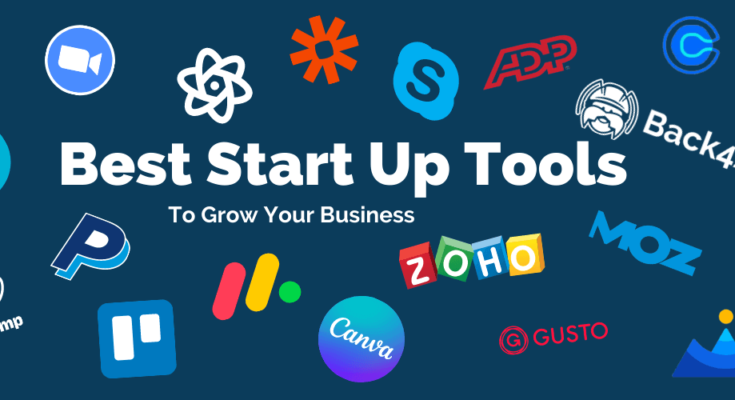There’s no shortage of tools in the startup world. But ask any founder and they’ll tell you the real challenge isn’t choosing tools—it’s choosing the right ones for the stage you’re in.
In early traction stages, a bloated stack is more of a liability than an asset. At the same time, going too lean limits your ability to iterate, learn, and scale. Striking the right balance—between cost, capability, and clarity—is where most early-stage founders get stuck.
We’ve put together a no-fluff, founder-first list of 12 tools we believe form the ultimate growth stack for Indian tech startups in 2025. Each tool here solves a real problem—from building and shipping fast to understanding user behavior, driving acquisition, and managing growth experiments.
Whether you’re in a product-led, sales-led, or hybrid GTM motion—this stack is built to scale with you.
1. Notion – For Centralising Knowledge & Ops
Every fast-moving team needs a brain. Notion is just that. From OKRs and meeting notes to GTM plans and user research—Notion helps you ship clarity. It scales well with growing teams, reduces context-switching, and turns chaotic processes into calm systems.
Bonus: Use templates for sprint planning and experiment tracking—don’t reinvent the wheel.
2. Mixpanel – For Product Analytics That Drive Decisions
DAUs, feature adoption, retention curves—if you can’t measure it, you can’t fix it. Mixpanel is built for product teams that want to go beyond vanity metrics. Segment users, define funnels, track cohorts, and ship features based on what users actually do—not what they say.
3. PostHog – A Privacy-First Alternative (with Session Replays)
If you prefer hosting analytics in-house or want full data control, PostHog is a strong contender. It offers everything from event tracking to heatmaps and session recordings—giving early-stage teams deep visibility into user friction points.
4. Figma – For Fast, Collaborative Design
Design is no longer a handoff—it’s a conversation. Figma makes that conversation seamless. Founders, PMs, designers, and engineers can co-design flows, review UX, and iterate quickly. If you’re shipping product weekly, you’ll want Figma in your stack from day one.
5. Webflow – To Build, Launch & Test Without Engineers
Need to spin up a landing page for a new feature? Or validate a GTM idea in hours? Webflow is a superpower for growth teams. It gives marketing and growth PMs full control—without writing a single line of code.
Real-world tip: Use Webflow + Zapier to build no-code workflows that automate onboarding and feedback collection.
6. Customer.io – For Lifecycle Emails That Don’t Annoy
Blast campaigns are dead. Smart startups today win on contextual, behavior-driven communication. Customer.io lets you set up triggers based on user actions and nudge them toward key milestones—like completing onboarding or activating a core feature.
7. Crisp – To Talk to Users in Real Time
Sometimes growth isn’t about another experiment—it’s about listening. Crisp combines live chat, CRM, and chatbot capabilities so early teams can stay close to users. It’s especially powerful for founders handling support directly in the early days.
8. Zapier – For Building Internal Automations (Without Engineers)
Automate the boring stuff. Whether it’s sending a Slack notification when someone signs up or logging feedback from Typeform into Notion—Zapier saves hours of manual work every week. It’s the duct tape of fast-growth teams.
9. Airtable – To Build Lightweight Internal Tools
Need a CRM, content calendar, or feedback tracker? Airtable gives you the flexibility of spreadsheets with the power of databases. Many early-stage GrowthX members use it to manage hiring pipelines, influencer campaigns, or user interviews—before switching to heavier tools.
10. Ahrefs – For Organic Discovery & Competitive Intel
SEO isn’t just a channel—it’s a moat. Ahrefs helps early teams understand what your audience is searching for, where competitors rank, and what content gaps you can own. Use it early, use it consistently, and watch compound interest kick in.
11. VWO – For A/B Testing Without Guesswork
Once you’ve hit initial traction, small tweaks can lead to big wins. VWO lets you test CTAs, layouts, pricing, and more—without relying heavily on engineering. For PLG products especially, it’s a must-have for continuous growth experimentation.
12. Retool – For Building Internal Dashboards (Fast)
Every startup eventually hits the “dashboard debt” wall—no visibility into active users, churn, revenue leaks. Retool lets you build custom dashboards and internal tools in hours. No waiting on your dev team. No losing sleep over SQL.
Bonus: Don’t Just Stack Tools—Stack Learnings
The harsh truth? Tools don’t grow your startup—people do. Tools only unlock potential when paired with the right mindsets, systems, and rituals. That’s where frameworks like CRAFTS and support ecosystems like GrowthX come in.
In fact, many of the top Indian startups we’ve worked with didn’t just install tools—they installed growth-thinking. From defining north stars and diagnosing loops, to setting up growth rituals and hiring PMs—these things can’t be solved with software alone.
If you’re a founder, PM, or marketer building your own version of Flipkart, Razorpay, or Zepto—there’s no better time to get intentional about your stack. But more importantly, get intentional about your approach to growth.
That’s the difference between shipping features—and building flywheels.
Final Thoughts
The right growth stack doesn’t overwhelm—it empowers. And it evolves with your company. Pick tools that reduce friction, increase clarity, and help you learn faster. But don’t obsess over the stack itself. The ultimate lever is how you think about growth.
And if you’re looking to go deeper—not just with tools, but with frameworks, peers, and hands-on help—GrowthX is a great place to start.




